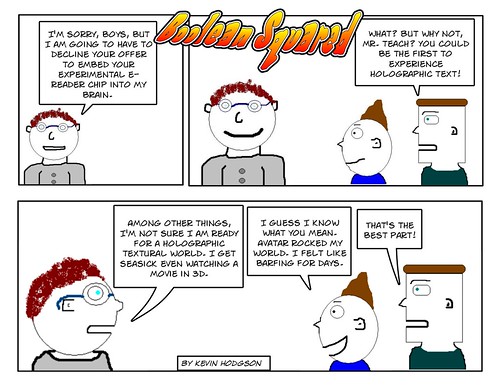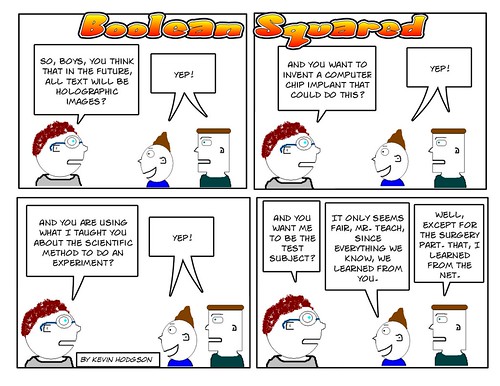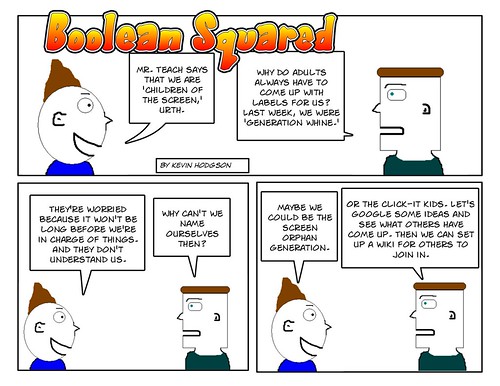I finished up the collection of articles in The Best Technology Writing of 2009 (a recommended book for those of you with gift cards in hand, wondering what to read) and Kevin Kelly has another fascinating take on technology and culture in an article entitled “Becoming Screen Literate.”
His premise is that the Age of Books on paper is in serious decline as we become more and more People of the Screen, using our computers and mobile devices for creating content, viewing content and interacting with content — including the stories that now rest between the shelves.
“We are now in the middle of a second Gutenberg shift –from book fluency to screen fluency, from literacy to visuality,” writes Kelly (177).
It’s hard to argue the point. Kindles are everywhere, and other ebooks are on the way (hello Apple). We are in the midst of some transition for sure, although whether we ever lose the emotional need for bound pages is another question (I say, no) but if a device comes out that makes an emotional impact as a reader, the book industry as it is set up right now will be in deeper trouble than it already is.
Kelly argues that this shift of visual fluency opens up more doors for us as participants. He cites sites such as Seesmic that are built around the idea of posting via video, and responding via video, and having those discussion archived like blog posts — systematic video conversations. The concept of the Mash-up — of grabbing and remixing media — show the possibilities of the screen fluency age, Kelly suggests. He cites a site called TimeTube that shows the various iterations of videos from the original to the various creative spawns of the original — a video timeline of mashups.And he notes, the mashup has its roots in the age of Literacy.
“You cut and paste words on a page. You quote verbatim from an expert. You paraphrase a lovely expression. You add a layer of detail found elsewhere. You borrow a structure of one work to use as your own. You move frames around as if they were phrases. (179)”
Here, I just did that, didn’t I? With Kelly’s words. Now, if I had a video of him, I could possibly remix his ideas (and the old Jumpcut site used to be a place to do that, although it has since disappeared. I’m sure there are already others in its place.)
Kelly admits that what is missing from the full-blown visual literacy movement is a search tool that can smartly scan through videos and find moments based on key phrases that would allow you more freedom for those reconstructed moments. Video search tools are incomplete, but does anyone doubt that someone (Google? Microsoft? Some unknown?) will invent a way to search the actual content of videos this way?
“Text, sound, motion will continue to merge into a single intermedia as they flow through the always-on network. (187)”
Clay Shirkey, meanwhile, has the last say in the book collection, noting in his piece “Gin, Television and Cognitive Surplus” that more and more people are using technology for their own creative aims because we have migrated away from television and onto the computer. That “cognitive surplus” that we used to use for watching Gilligan’s Island or Friends is now being used to compose our own media (see the ever-increasing popularity of YouTube, for example, or Flickr or ….).
“Media in the 20th Century was run as a single race — consumption … People like to consume, but they also like to produce, and they also like to share. (216)”
Shirkey’s point is that we are now in the midst of trying to figure out what to do with all of this cognitive surplus we have (now that we no longer care to sit like vegetables in front of network television, we have the time and energy to do other things) and the messy nature of the Net is evidence of that. Content and creation goes in all sorts of directions during these times (the “gin” reference in the title points to another time in history when there was a cognitive surplus) and watching it settle and move forward will be one of the most exciting things to watch in the next decade.
Don’t you think?
Peace (in the future),
Kevin





